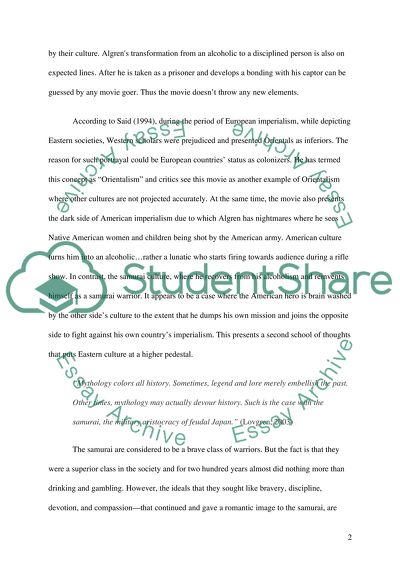Cite this document
(“Critical analysis of the film The Last Samurai Essay”, n.d.)
Retrieved from https://studentshare.org/miscellaneous/1574014-critical-analysis-of-the-film-the-last-samurai
Retrieved from https://studentshare.org/miscellaneous/1574014-critical-analysis-of-the-film-the-last-samurai
(Critical Analysis of the Film The Last Samurai Essay)
https://studentshare.org/miscellaneous/1574014-critical-analysis-of-the-film-the-last-samurai.
https://studentshare.org/miscellaneous/1574014-critical-analysis-of-the-film-the-last-samurai.
“Critical Analysis of the Film The Last Samurai Essay”, n.d. https://studentshare.org/miscellaneous/1574014-critical-analysis-of-the-film-the-last-samurai.


